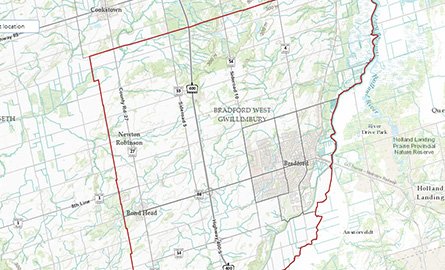The Town undertook a comprehensive ward boundary review in 2021 and adopted a new ward structure for the 2022 municipal election. Your ward may have changed from previous elections. Please view our Interactive Ward Boundaries Map to confirm which ward you are in.
Individual Ward (static) Maps

Interactive Ward Map
Not sure what Ward you live in? Input your home address into our interactive Ward Boundaries map to confirm your Ward.
Contact Us





